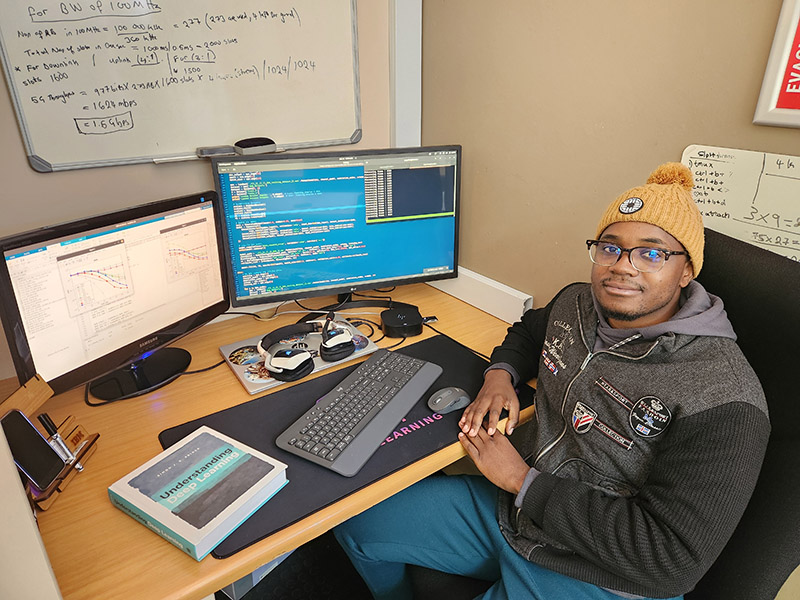Artificial intelligence (AI) has significantly transformed communication systems in today’s modern world. The integration of AI into various communication systems will likely lead to more advanced capabilities and the invention of new applications. Autonomous vehicles, exceptionally fast communications speeds and smart cities come to mind.
Aldrin Ngorima, a PhD student at the School of Computer and Electronic Engineering, is part of the Must Deep Learning and Telenet research groups within the Faculty of Engineering at the North-West University (NWU). His research focuses on applying AI to the telecommunications field, focusing on data transmission methods and using deep learning for future networks.
Deep learning involves extracting high-level features from data, using machine learning based on artificial neural networks.
This could help resolve the limitations of current methods. Some classical algorithms used in telecommunications are unusable in certain conditions, calling for more precise programming and coding applications for communication systems.
An example is the next generation of high-speed telecommunications, 6G networks, which on paper is super-fast. “To experience that speed, we need wireless communication systems that will meet the standard of that speed,” Aldrin says.
The telecommunications field is benefitting from advanced deep learning models that are more accurate and that perform better. “This is significant for many telecommunications applications, such as autonomous driving, mobile communications and smart cities, where strong and reliable wireless networks are essential.”
Deep learning, large datasets
He explains that in the deep learning domain, success often depends on the availability of large datasets. “By simulating complex environments, I am able to apply AI and experiment with different deep-learning models, optimising them to achieve the best adjustment between performance and computation.”
While most of his research concentrates on simulating existing and realistic communication channels, Aldrin’s ambition is to develop advanced wireless communication systems suited to many applications.
“My main goal is to develop reliable communication systems that will promote invention in the infrastructure sector,” he says.
As part of his PhD, Aldrin simulated a vehicular communication channel that consists of vehicles moving in different directions at more than 200 km per hour. He followed the specifications of researcher Guillermo Acosta-Marum and his team from the Georgia Institute of Technology in the United States.
Aldrin’s conclusion from his own research is that advanced Wi-Fi standards should be developed to meet the requirements of vehicular communication systems and keep up with the rapidly evolving digital landscape.
About the researcher
Aldrin Ngorima is a future deep learning specialist with a master’s degree in computer and electronic engineering at the NWU. His master’s dissertation centered around the development of a machine learning plant growth estimator for hydroponics.
He is also a co-author of chapter in a book titled Artificial Intelligence Research. The chapter that Aldrin co-authored is "Sequence Based Deep Neural Networks for channel estimation in vehicular communication systems".

Aldrin Ngorima
